Writing Prompts for 2nd Grade
Quality writing prompts for 2nd grade are essential in organizing your writing program. Students’ individuality and personalities shine through in their writing and drawing. Journals take some time to set up. Build a routine slowly that students love so that they can feel confident in their abilities as writers. Finished journals can make a precious keepsake at the end of the year. It is fun to see how far students progress in a year.
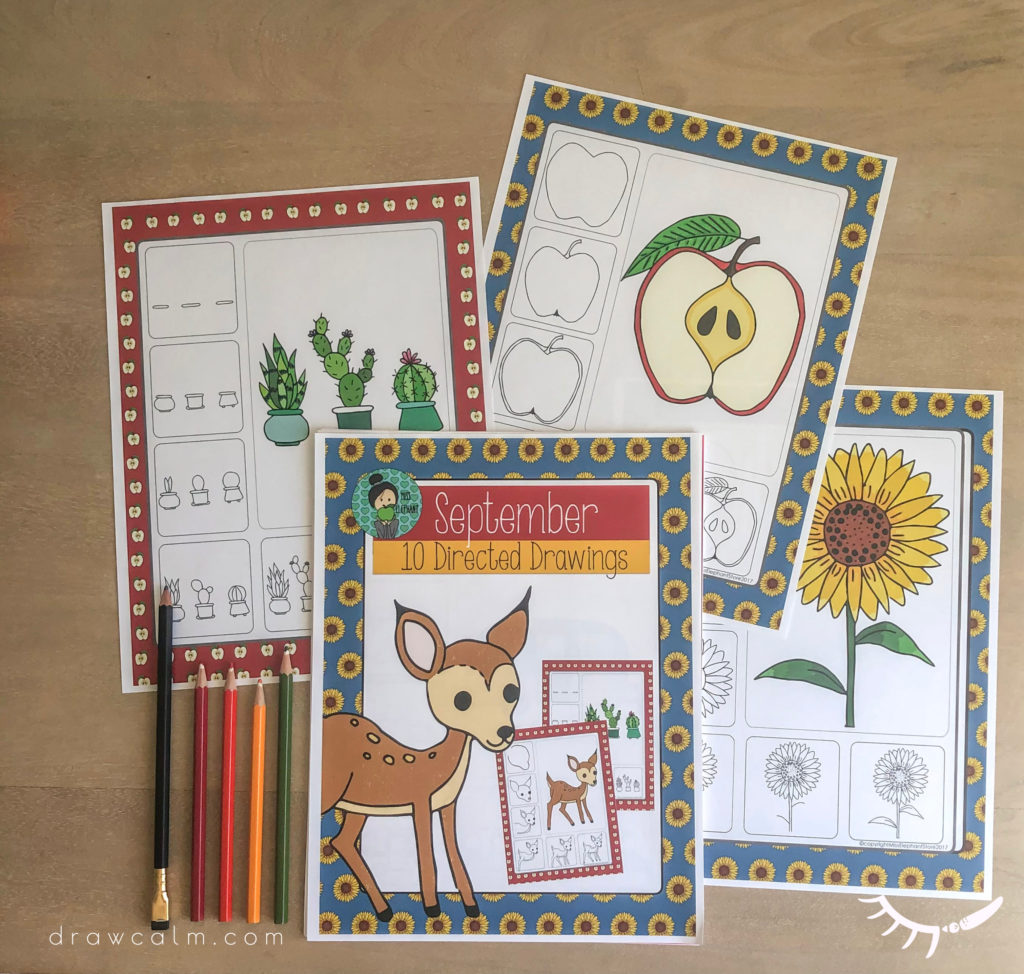
What are Writing Prompts?
You may be asking, what are writing prompts? Writing prompts are an important part of a balanced writing program. Students love to have the opportunity to write about what interests them. Variety is an important part of a balanced writing program. In addition to free-write opportunities, it is important to build students’ vocabulary. Building vocabulary shows them that they can write about many different things.
Autumn Writing Prompts
Autumn writing prompts are a great way to build writing confidence from day 1. A back to school writing activity starts the year off strong, showing students that they are confident and capable. I designed some that I have been using with my class for several years. If you are interested at seeing them you can check out my fall writing prompts here:
Fun Writing Prompts for September
When using writing prompts for September we write about fun festive fall things like sunflowers, scarecrows, fawns, camping, and apples. It provides opportunities to write about what students see. Writing about these fun fall topics could be a great addition to a class field trip to the fall fair. There are also many simple real life connections. Like bringing in apples into the classroom. Students can count the seeds, or make juice!
We follow seasonal writing prompts for 2nd grade. This helps students learn key vocabulary to write about the year and the change in seasons. By learning seasonal vocabulary, students can reuse this vocabulary in other writing projects during the month.
Writing Independence
Having students feel confident with their writing and drawing each day in their journal is important. Students feel proud that they know what to do and can do it on their own. This independence allows you, as the teacher, to circulate and help students. Either helping one on one or having a small writing group at the back table while others work independently.

Welcome Back to School Activity: Mix in Directed Drawings
I love pairing journal writing with drawing instruction for a great welcome back to school activity. There are several benefits to having structured drawing time when writing. To learn more about the benefits of directed drawing see my blog post: Why Directed Drawing is So Important
- Drawing helps students know what to write.
As students draw it helps them think about the topic and begin their work. That way when it comes time to write they have had time to reflect on the topic. They are already in the workflow and are less likely to feel stuck.
- It provides an opportunity to expand their drawing abilities.
Students are presented with different ideas to draw: bats, pumpkins, thanksgiving turkeys. When presented with variety, they learn that they can draw and write about many things.

Organizing Yearly writing
I created writing prompts that could be organized in 2 different ways. Either as monthly writing booklets or a yearly writing book.
Monthly Writing Booklets
Photocopying a full month at a time allows you to add seasonal cover pages and attach all writing from the month together. The advantage of this method is that work can be kept in good condition and pages are less likely to get crumpled. It is a great way to share work with families and celebrate learning at the end of the month when the booklet is sent home.
Yearly Booklets
A different option is to print out yearly booklets. Printing out the whole year has advantages too. Students love to look back and reread their old journal entries. They love to pour over their drawings and see all the pictures they have done throughout the year. Another advantage is that teacher prep is all done in one go, and you do not have to rush to get your photocopying done each month. It is all ready to go and you can flow from one writing month to the next.
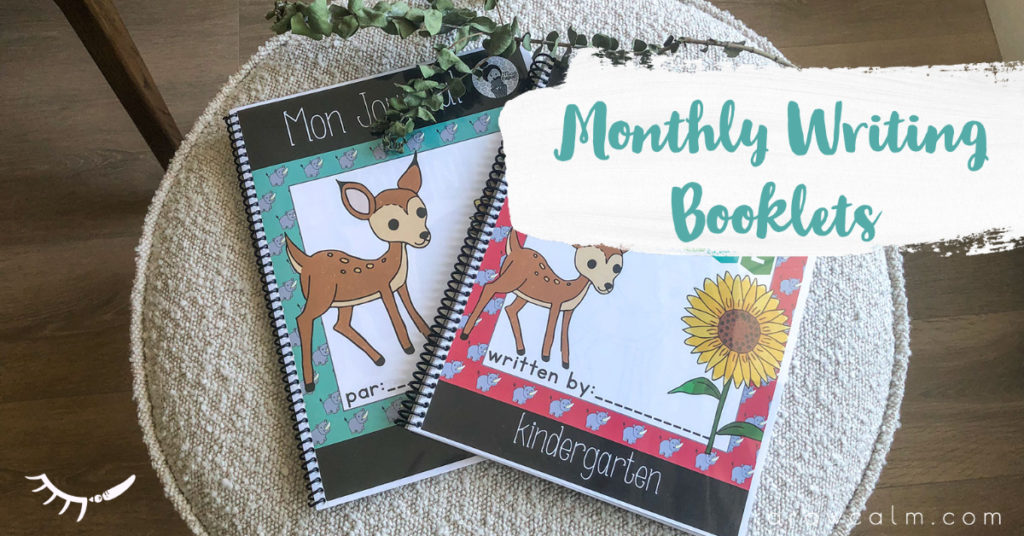
2 Levels of Writing Prompts for 2nd Graders
Two Level Options for Differentiated Learning
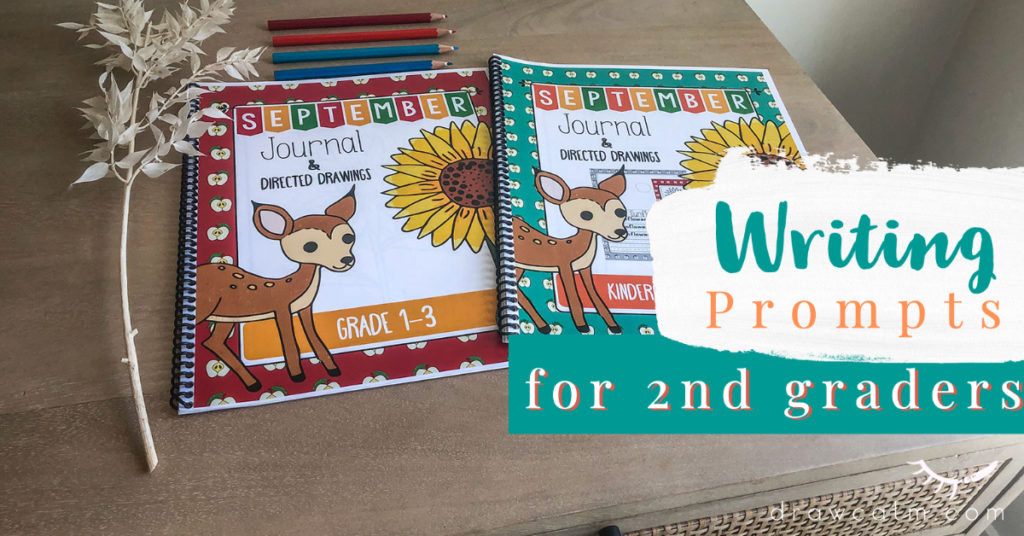
Fill in the Blank Sentence
Having different levels of writing prompts for 2nd graders is useful. When teaching grade 1 and 2 I found it helpful to have students use a fill in the blank sentence. This helped ease new writers into the writing process.
Writing Prompts with Word Banks
I provided students with writing prompts with word banks to fill in the blank, that way they could make the story their own. It is fun to be provided with choices. Choice adds extra vocabulary learning and reading practice for students.
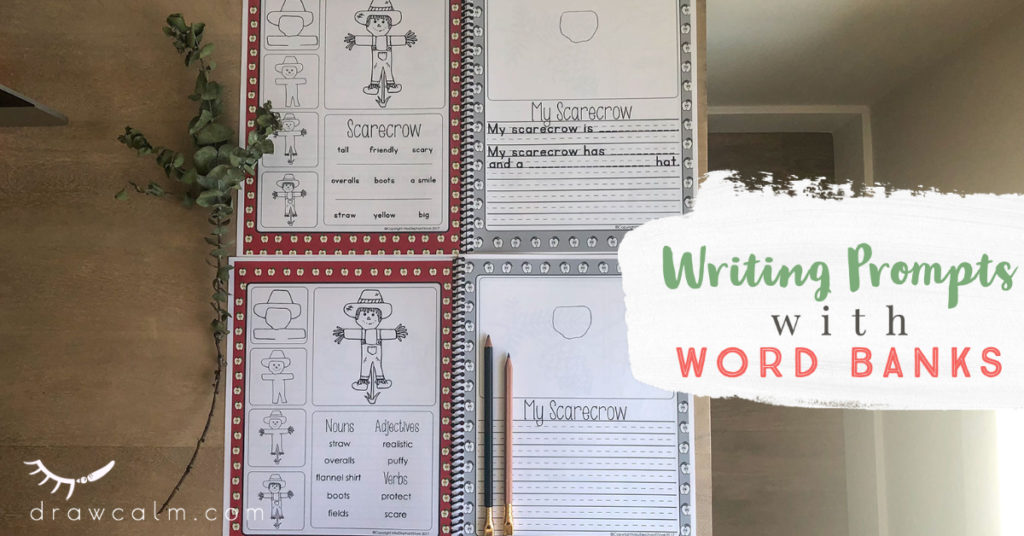
Differentiated Writing: Teaching Varying Abilities
Some students come in in September ready to write their own sentences. For students who are eager to write, it is helpful to provide them with vocabulary as well as have them sound out their own words. Read more about differentiated writing from exceptional thinkers website Why Differentiated Instruction is Important.
Printable Picture Dictionary for Kids
Journal prompts come with a printable picture dictionary for kids, showing the 10 items drawn along with other useful fall vocabulary. This dictionary has pictures beside each word to help young learners find the word they are looking for.
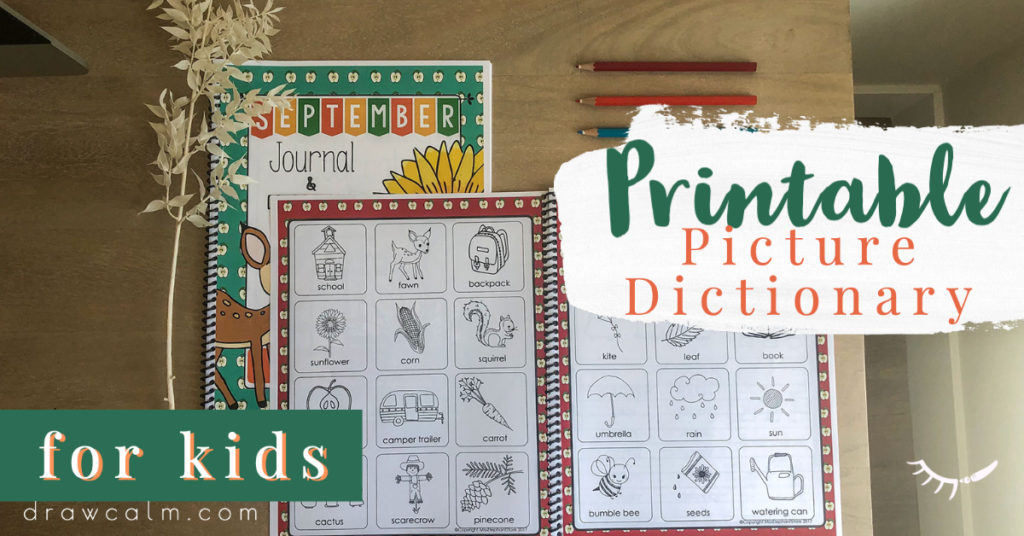
September Coloring Page: Title Page
Print title pages for students to color. It doubles as a fun September coloring page. It is a simple way for students to learn how to mix colors. Check out this blog post to learn how to mix colors with pencil crayons. This makes the final presentation beautiful and helps keep writing organized from month to month. For more information on the importance of coloring check out this blog post by kids village Why Coloring is Important for Preschoolers.
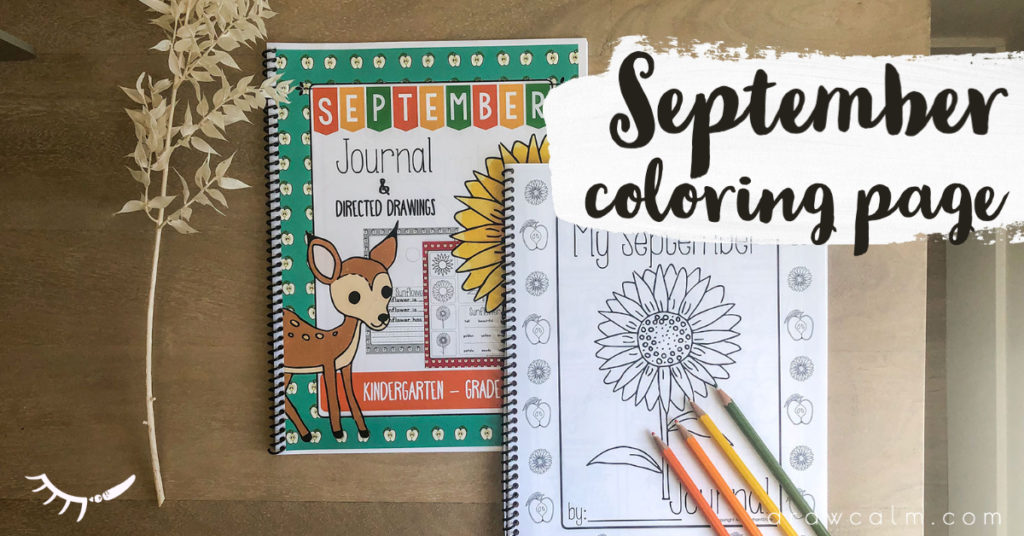
Second Grade Writing Notebook
Journal writing can be done in a second grade writing notebook too. Title pages can be printed out at a smaller scale to fit the size of your book. Dictionary pages can be added too.
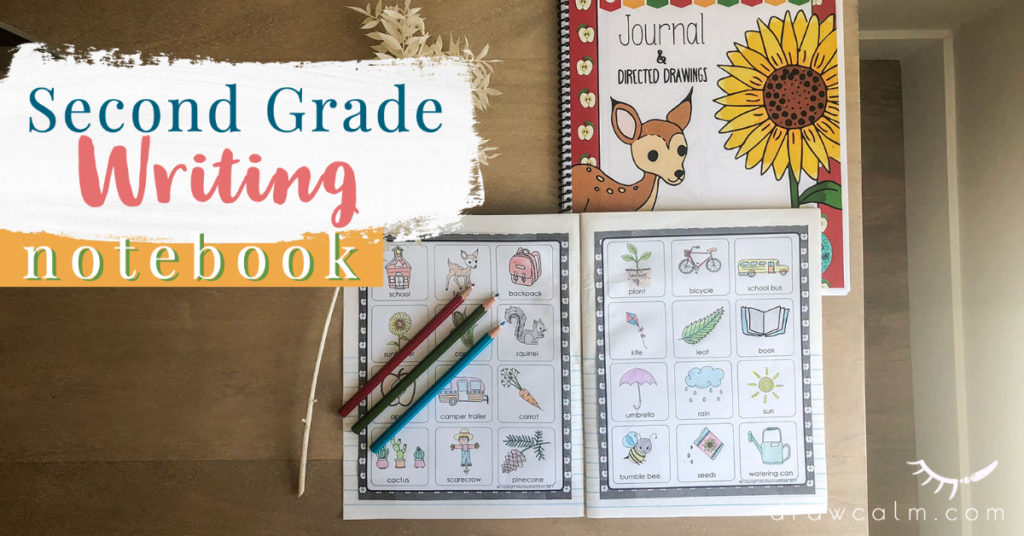
Cut and Paste Activity for 1st Grade
I like the feel and look of students writing in their lined notebooks rather than on photocopied paper. I designed a half-page option in my directed drawing journal prompts so that teachers have 2 options of how to use student journals for their students’ writing.
- Cut and Paste Activity
First, students can cut and paste the drawing starter image into their lined notebooks. Next, students complete their drawing first, as sometimes it is trickier to draw on a page that is wet or lumpy with glue behind it. Finally, have students paste it into their books.
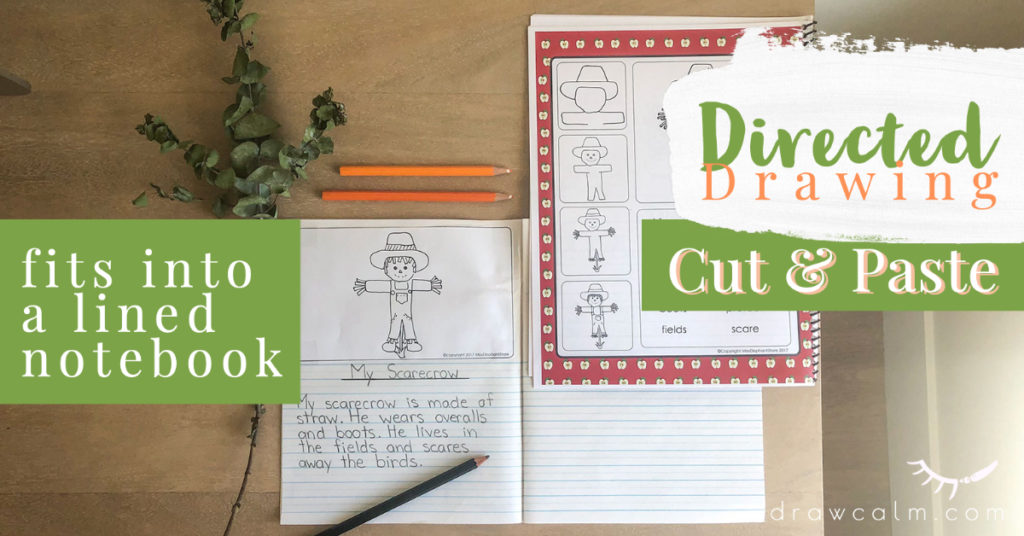
- Trace
Some years I have students trace the image straight into their journals. This reduced my photocopying, as I reused the tracers each year. It also meant that students did not need to cut or glue and could get straight to their journal work.
Tracing Tips:
Tip 1: If students are tracing they can usually see the image right through the notebook paper as the paper is thin. However, sometimes I liked to trace over the lines with a sharpie to make it a bit easier for them to see the initial shape through the paper.
Tip 2: Skip a page. Students cannot trace the starter image if they have already colored it on the front of the page. The back of the page can be used to write comments to your students. Some more advanced writers may use both sides for their writing too.
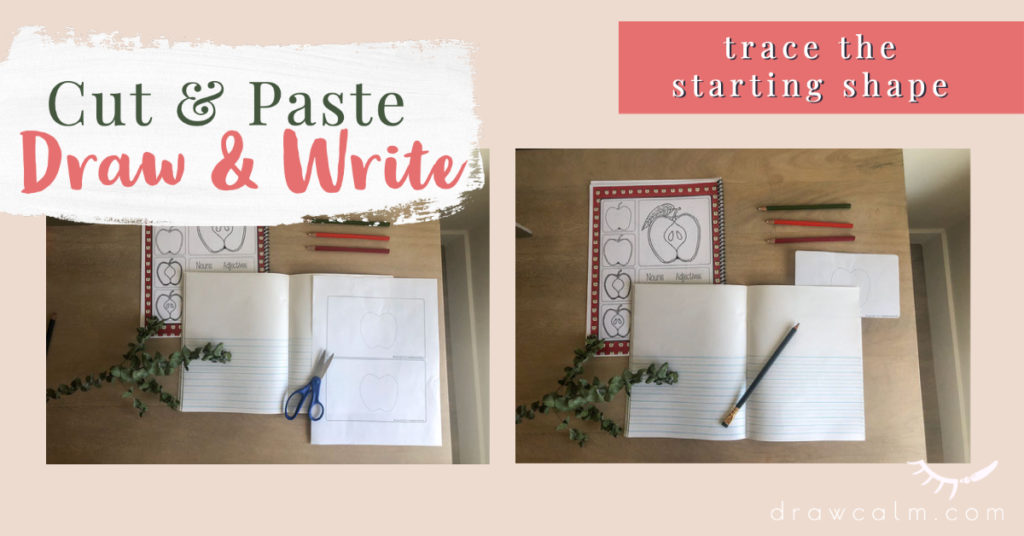
Photo Reference for Coloring
Print out photos, or better yet, bring in the real thing for students to look at.
- Firstly, talk about the colors you see. For example, where does the apple look darker and lighter? Secondly, have students hold up what colors they have that would be similar. After that, show them how they can layer one color on top of another to mix their pencil crayons just like you can mix paint.
Tip: In addition, print out and hang up all the photos after you are finished with them. Next, put them up on your word wall for students to see afterward. Beautiful photos also double as a simple seasonal classroom decoration! I made some photos to use in my classroom to go along with my writing prompts so that they were ready to go! Photo and Question Prompts
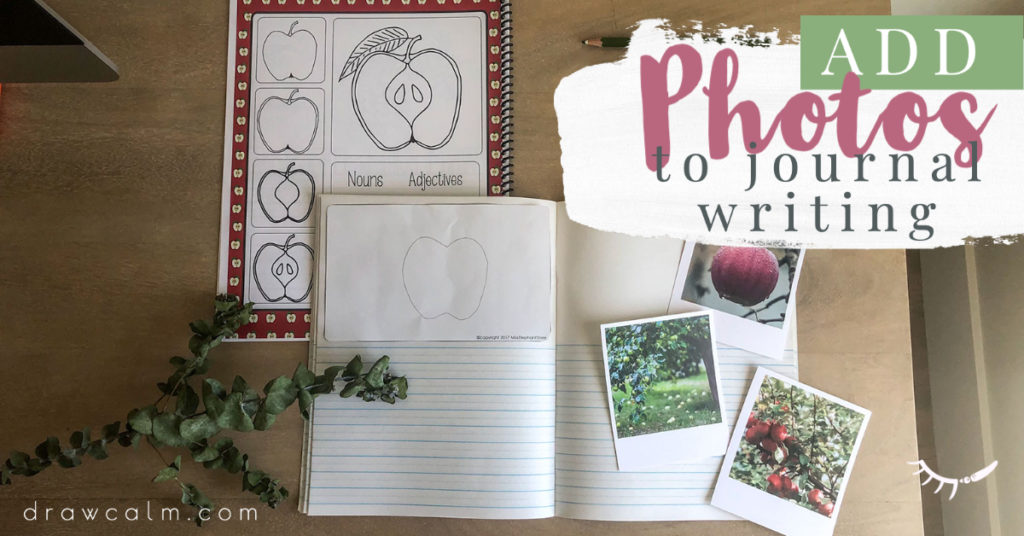
Tips for Teaching Writing to Kids
Fun Brain Break for Kids
When teaching writing prompts for 2nd grade, before writing time have students take a fun brain break. Learn the vocabulary and talk about the topic and then break for exercise. When students are finished, they start writing in their journals and have uninterrupted writing time. For instance, check out 20 + Fun Brain Breaks for Kids on Becky Spence’s Blog.
Gradual Finish for Uninterrupted Time when Writing
It is helpful to have a gradual finish time for writing blocks so students can maximize their uninterrupted time. For example students could flow into silent reading or snack time when they’re done their writing. This allows students who need a bit more time, or are engaged in their writing the flexibility to not have to rush into the next activity. Quality writing prompts for 2nd grade can increase enthusiasm and build confidence in young writers. Finally, if you would like to check out my writing bundles for the year click below:
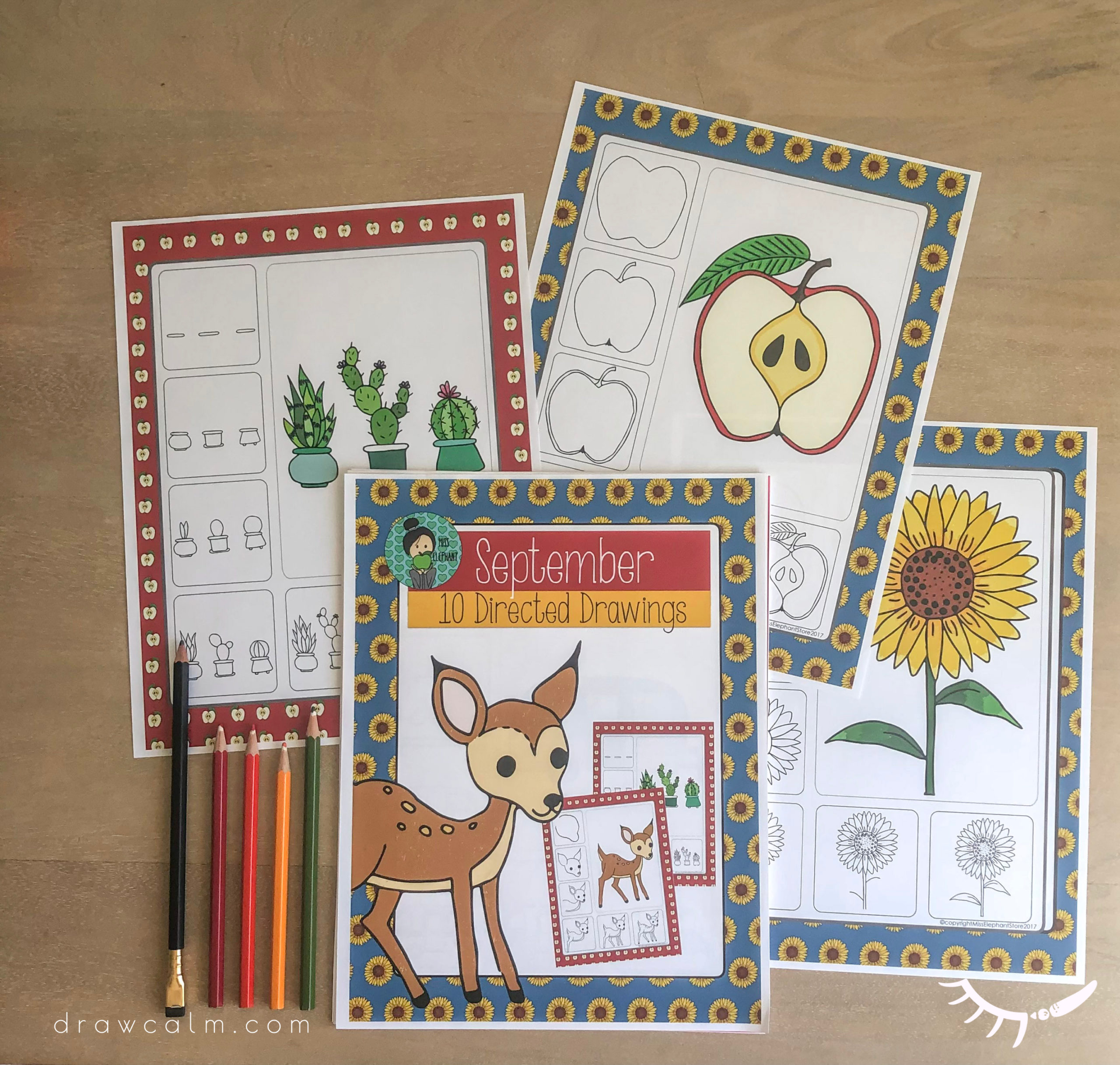

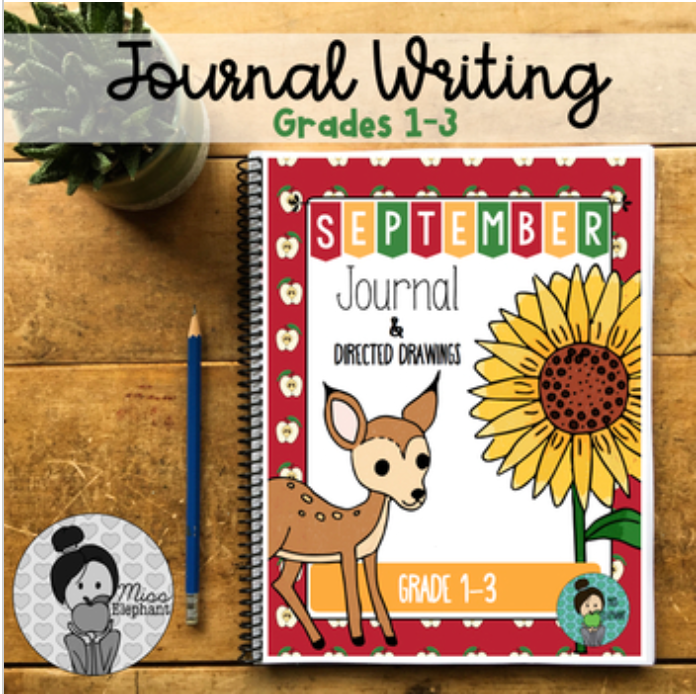


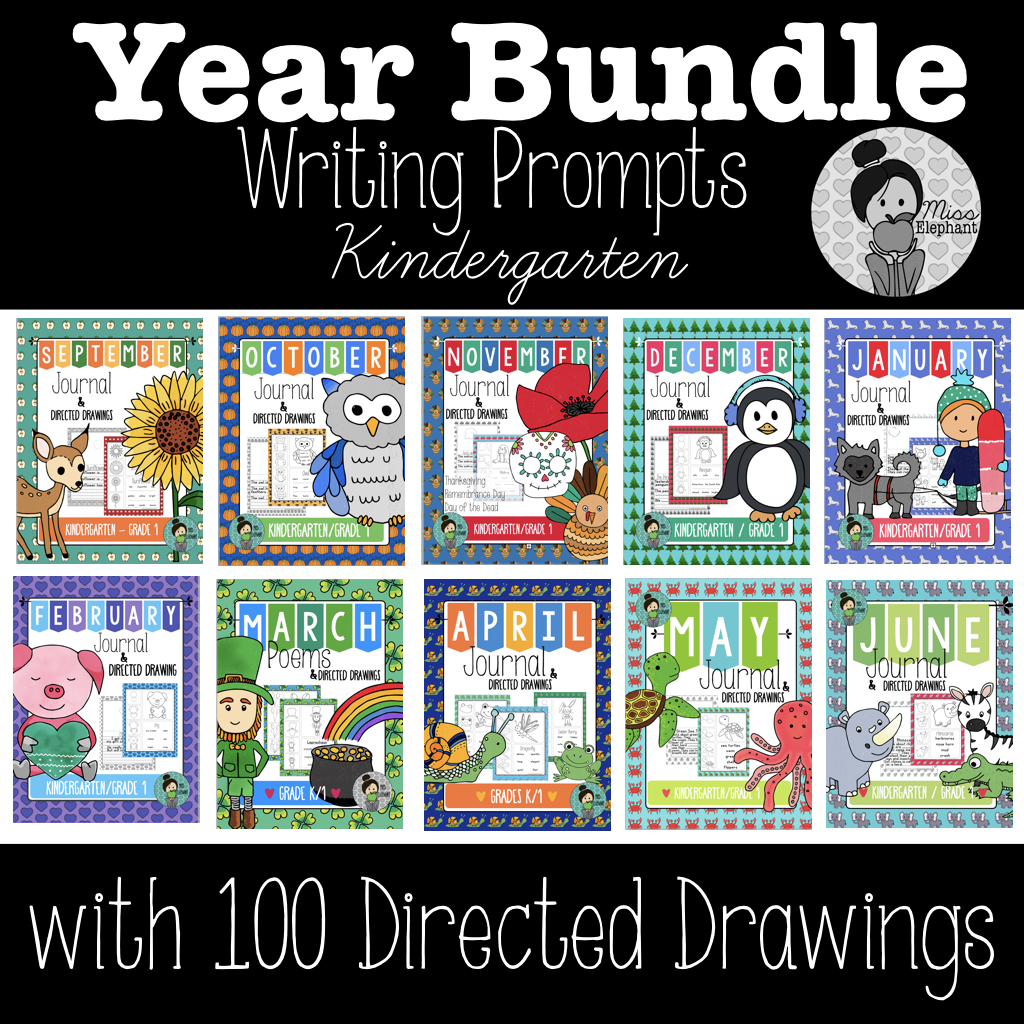
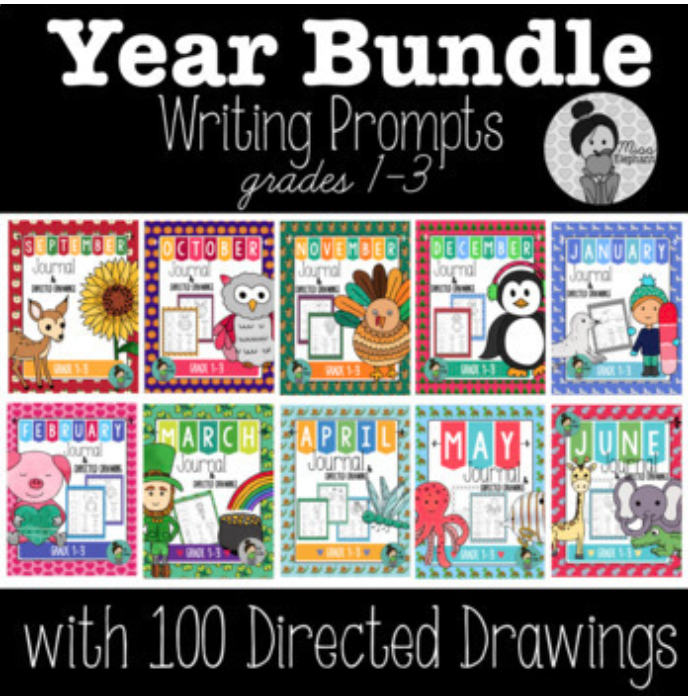
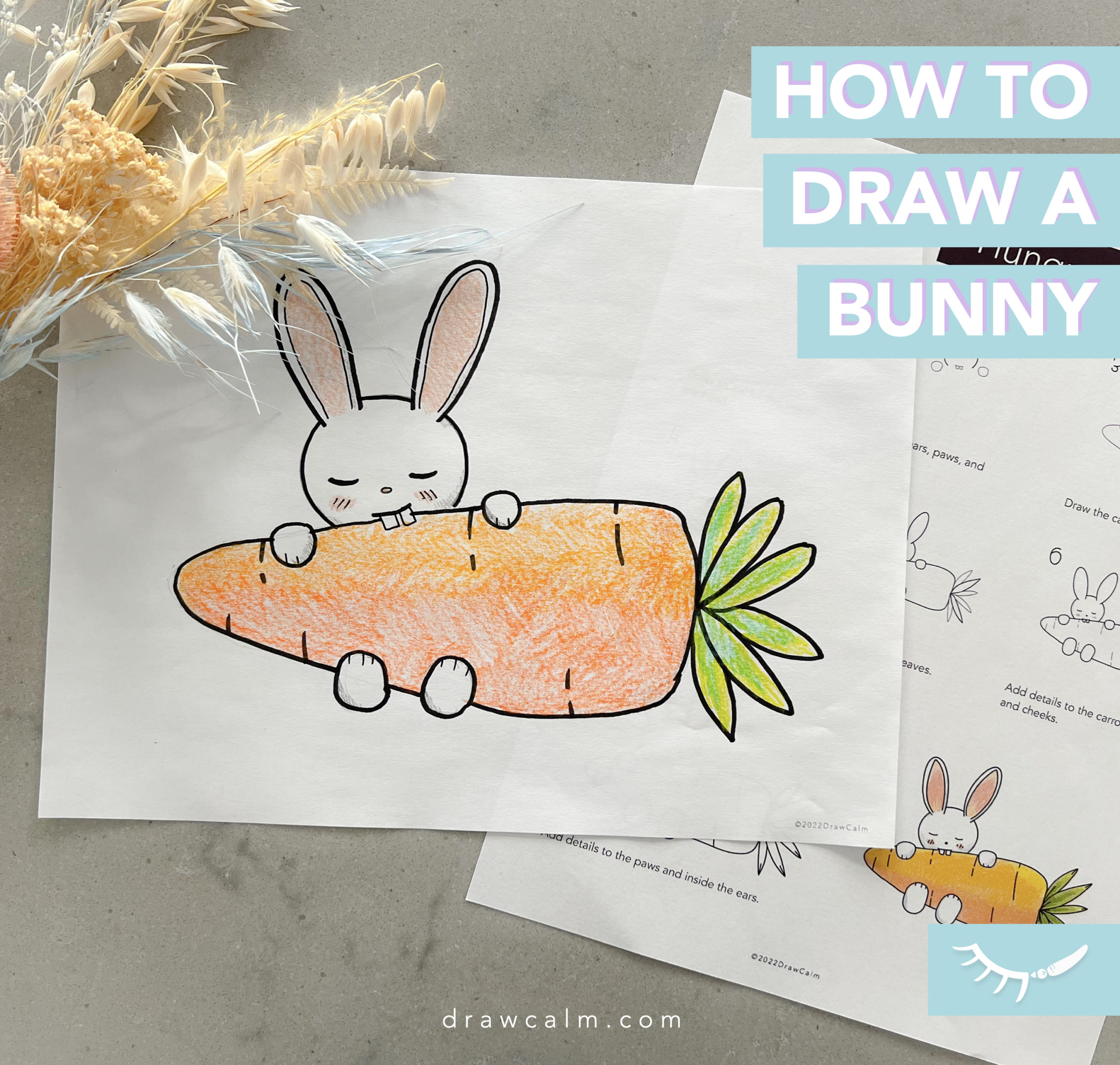
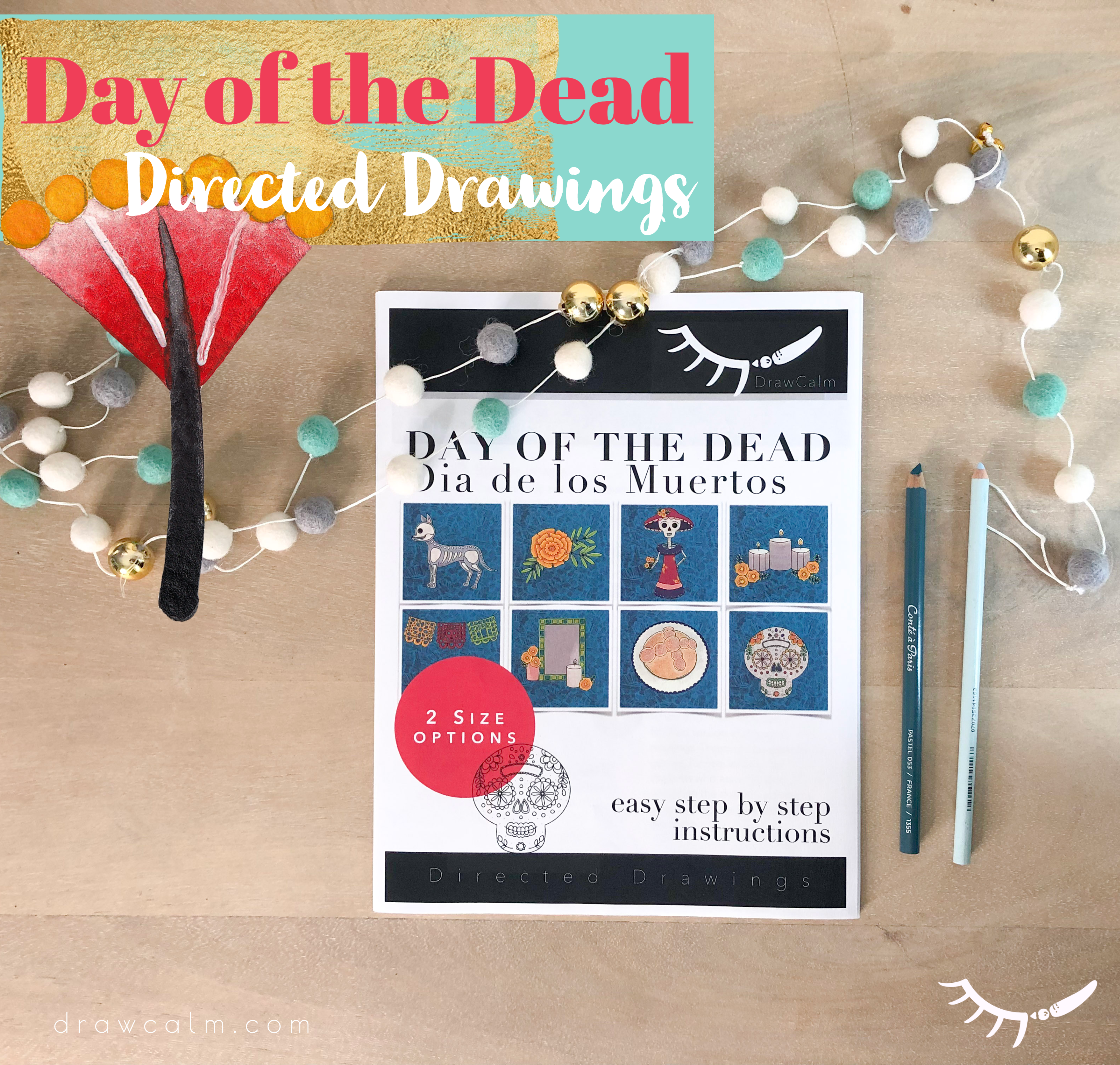
+ COMMENTS